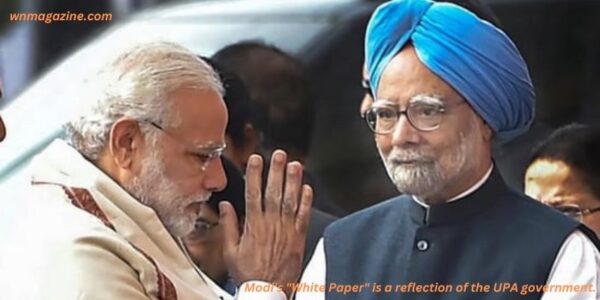The recent White Paper on the Indian Economy, presented by the Narendra Modi administration in Parliament, serves as a critical reflection on the tenure of Manmohan Singh, the economist-turned-prime minister. The document sheds light on alleged corruption and fiscal mismanagement during Singh’s 10-year rule with the UPA government, once credited for initiating economic reforms in India. It contrasts the economic trajectory of the first decade under Modi’s leadership (2014–24) with the UPA regime (2004–24), pointing out the impact of political interference and the banking crisis on India’s economic momentum.
Also Read: wellhealthorganic vitamin b12
Had it not been for the unprecedented global disruptions caused by the COVID-19 pandemic, the report suggests that India might have achieved significant milestones even earlier. Presented on the day of Manmohan Singh’s retirement from public life after a decade in the Rajya Sabha, the White Paper aligns with the BJP’s long-standing argument for a single center of power, contrasting it with the dual centers of authority during the Manmohan Singh administration, where UPA Chairperson Sonia Gandhi held significant political influence.
The document also highlights the challenges of a minority government entangled in conflicting goals among its alliance partners, ultimately neglecting the nation’s interests. It argues for the necessity of a strong majority government at the center, as opposed to regional party alliances, to provide effective administrative and economic support. The alleged scams and fiscal mismanagement during the Manmohan regime are attributed to political interference, diverting the government’s focus from economic progress to mere survival.
While the White Paper is presented as a factual account, its timing, just before the 2024 general elections, adds a political dimension. It places the Congress, the main rival of the BJP and former allies in the UPA, in a precarious position, holding them accountable for economic mismanagement and corruption. Additionally, the document provides the BJP’s NDA candidates with ammunition for the upcoming elections, promising a developed India through “Modinomics” by 2047. As opposition parties strategize to challenge the Modi administration, the BJP presents itself as the party committed to fulfilling the aspirations of the youth for a powerful, progressive, and inclusive India.
Beyond serving as a historical economic account, the White Paper symbolizes the Modi government’s resilience in the face of challenges, its commitment to ambitious goals, and its determination to hold those accountable for corruption. It reflects the administration’s zero-tolerance stance towards corruption and positions Modiomics as the driving force for India’s development in the years to come.
Also Read: well health tips in hindi wellhealth
